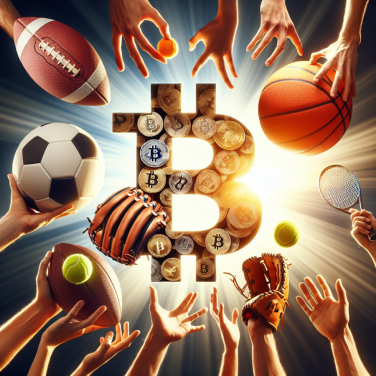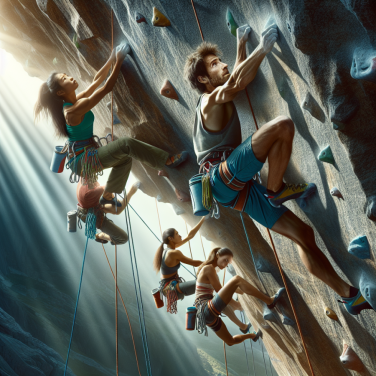Tracing the Evolution of Cheerleading in Sports History
Cheerleading has remarkably evolved since it was first introduced to sports in the late 19th century. Initially conceived as an avenue to encourage enthusiasm and team spirit, cheerleading has grown into a dynamic sport recognized globally for its skill and athleticism, influencing modern sports in numerous ways.
The earliest form of cheerleading is traced back to the late 1890s in the United States. It began as an all-male activity at Princeton University, where students would gather during football games to shout cheers and chants in support of their team. Over time, cheerleading grew in popularity, spreading to other universities and eventually introduced in high schools.
In the 1920s, women began to get involved in cheerleading, bringing new elements such as acrobatics and gymnastics into the mix. The inclusion of women led to a transformation from simply shouting cheers to incorporating complex stunts and collaborative routines. Furthermore, the first cheerleading organization, the National Cheerleaders Association (NCA), was established in 1948, aiming to standardize cheerleading techniques and styles.
The 1970s saw televised sports events become more common, propelling cheerleading to a broader audience. It was also during this period that competition cheerleading emerged, pushing the sport to new athletic heights. Cheerleading moved from just being a sideline attraction at sporting events to a recognized, competitive activity. The sport began to emphasize athleticism and acrobatics, developing into the modern, high-energy performances that are familiar today.
By the late 20th century, cheerleading had expanded globally, gaining popularity in countries like Japan, Australia, and the United Kingdom. The sport has grown both in terms of recognition and participants, reaching a staggering 4 million cheerleaders by the end of the 20th century.
In recent years, cheerleading has been pushing for recognition as an Olympic sport. The International Cheer Union (ICU) was established in 2004, which now represents over 100 member nations, and in 2016, the International Olympic Committee provisionally recognized the ICU, a significant step towards becoming an Olympic sport.
The impact of cheerleading on modern sports is significant. It has contributed to the increased interest and enthusiasm in sports games, enhancing the overall fan experience. Moreover, it has influenced other sports, with conditioning and training methods of cheerleaders being adopted by athletes from different fields to enhance their performances.
In conclusion, the evolution of cheerleading as a sport has played a significant role in transforming modern sports.
Read also:
Unraveling the Mystery: The Number of Golf Balls on the Moon
Exploring the Influence and Significance of Cheerleading in Modern Sports
Cheerleading, which started in the late 19th century as an all-male activity, has evolved significantly to become an intrinsic part of modern sports culture. Its significance in modern sports cannot be understated, being a combination of sport, entertainment, and marketing tool that boosts the overall sports experience.
One of the significant influences of cheerleading in modern sports is its contribution to game-day atmosphere and fan experience. Cheerleaders not only lead cheers but also perform highly choreographed routines—creating an environment full of team spirit that stimulates fans' enthusiasm. This atmosphere enhances fan engagement and encourages them to participate actively in the overall sports event.
Additionally, cheerleading plays a vital role in promoting sports brands and providing entertainment. As brand ambassadors, cheerleaders participate in community outreach initiatives and help highlight the team's image. Their performances during game half times draw significant attention. They break the monotony of games and provide entertainment to fans, making sporting events more than just the competition but a comprehensive entertainment package.
Cheerleading has also become a competitive sport in its own right. Cheerleading competitions are now broadcasted globally and attract thousands of spectators, much like any other mainstream sport. The pursuit for competitive cheerleading excellence has led to the proliferation of cheerleading training centers, which serves as an economic boost in communities where they are established.
Moreover, cheerleading emphasizes the importance of teamwork and boosts athletes' morale. Cheerleaders' primary role is to rally the crowd and the team, affecting the overall morale and performance of the athletes. Cheerleading fosters a positive sporting environment and helps athletes boost their performance by establishing an engaging and positive atmosphere in stadiums.
Furthermore, cheerleading has made a significant impact in encouraging gender inclusivity in sports. Initially, cheerleading was a male-dominant activity. Over the years, it has drawn participants from both genders, promoting gender inclusivity in sport. It created opportunities for women in sports at a time when sports were largely dominated by men.
In summary, cheerleading has grown to become an indispensable part of modern sports. It plays a crucial role in enhancing the game-day experience, promoting sports brands, providing entertainment, and fostering gender inclusivity. The evolution and impact of cheerleading in modern sports have indeed been profound, steadily gaining recognition as an influential component in the sports industry.




